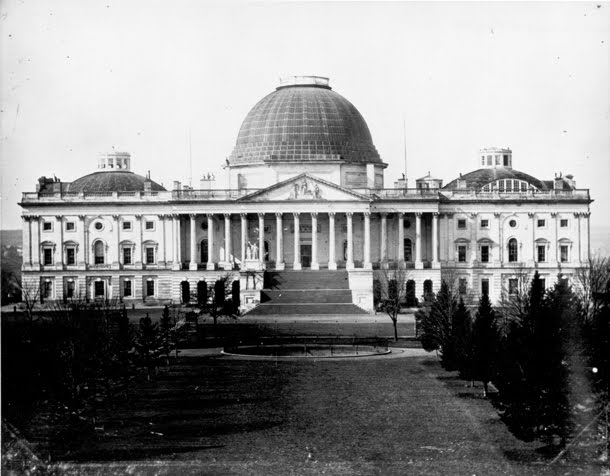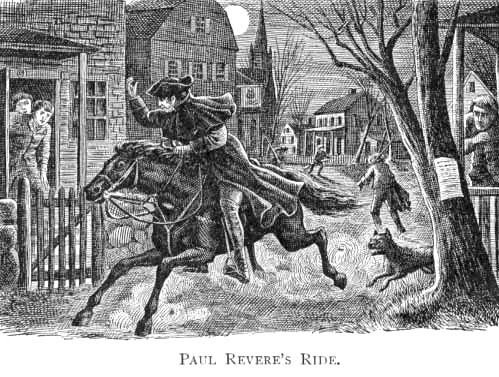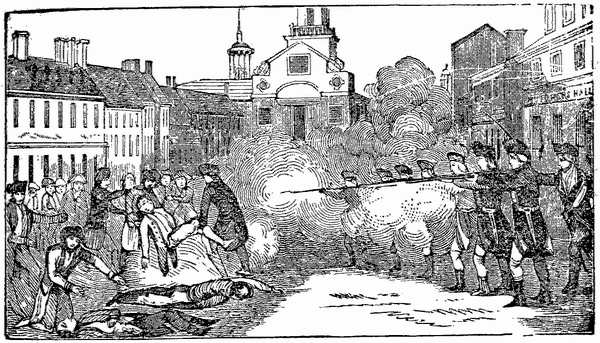From The New Republic and Alliance Defense Fund:
Living It Up
Adrian Vermeule
Adrian Vermeuleview bioLiving It Up States of Detention Outcomes, Outcomes August 2, 2010
12:00 am
Print.Keeping Faith with the Constitution
The Living Constitution
by Goodwin Liu, Pamela S. Karlan, and Christopher H. Schroeder
by David Strauss
Oxford University Press, 272 pp., $21.95
Oxford University Press, 176 pp., $21.95
Justice Holmes described the Constitution as an “organism,” and some people say that “we have a living constitution.” What do such metaphors mean? Two new books lay out two different accounts of living constitutionalism: “constitutional fidelity” in the first book, “common-law constitutionalism” in the second. These living constitutionalisms have a common enemy—originalism, roughly the idea that the Constitution should be read according to the public meaning the founding generation understood it to have. But once that enemy is slain, the two versions of living constitutionalism face new challenges. In the case of constitutional fidelity the challenges are insuperable, while for common-law constitutionalism they are merely daunting.
The first book is jointly authored by a troika of legal academics-cum-political insiders. Liu, a law professor from Berkeley, has been nominated for a judgeship that, as of this writing, is languishing in the Senate, a victim of political opposition. Karlan is a Stanford law professor who has been widely touted as a judicial prospect. Schroeder is a Duke law professor who now holds a post at the Department of Justice. Together the troika argue against originalism and in favor of a certain notion of constitutional fidelity.
Their idea is that fidelity is owed, not to the founding generation’s specific expectations about how the constitution would apply, but to the more general principles that the Constitution embodies. The application of those principles will change over time with changing circumstances, and this is the sense in which the Constitution develops organically. Constitutional law, in this account, is a stratified bed of fossil remains, deposited by the changing sense of each successive generation about what fidelity demands in the situation at hand.
Confusingly, the troika say at one point that constitutional fidelity is a third way, neither originalism nor a living-constitutionalist view. Yet they define living constitutionalism as the idea that “the Framers intended the document [the Constitution] to serve as a general charter for a growing nation and a changing world.” That definition is the very claim made on the book’s first page: “Our founding document establishes a general framework for effective governance of a nation destined to grow and change.”
Keeping Faith with the Constitution is a typical manifesto written by law professors committed to public service and constitutional politics. It breaks no new ground theoretically. Their idea of constitutional fidelity is an old one, rediscovered in each generation. Lawrence Lessig stated it vividly in the 1990s, and more recently it has been taken up by Jack Balkin; it also has many affinities with Ronald Dworkin’s approach to constitutional interpretation. Liu, Karlan, and Schroeder acknowledge their debt to Lessig, Balkin, and others in the endnotes, and the reader with limited time or taste for legal theory would do well to go directly to Lessig.
Constitutional fidelity appeals to those who wish to square the original Constitution with a commitment to the bien-pensant positions of the day, which can be justified as faithful to the founders’ higher principles, even if not to their specific expectations. In Balkin’s treatment, for example, constitutional abortion rights are mandated by the principles embodied in the Fourteenth Amendment. The problems with this are manifold. The approach caricatures its target—most originalists do not think that the founders’ specific expectations control, as opposed to the original meaning of the words they used— and it tends to slip and slide between the principles the framers actually thought about and the principles that would put their enactments in the best possible light. But the real illness afflicting constitutional fidelity, a chronic and debilitating illness, is that there is no limit to the level of generality at which principles may be described. Last April Fool’s Day, the legal blogger Lawrence Solum parodied fidelity with a mock paper by Balkin, which argued that the constitutional rule giving each state two Senators embodies a principle of political equality, and thus actually requires that each state have a number of Senators proportionate to its population. The parody had the sting of truth.
The Constitution prohibits “cruel and unusual punishments.” Read in accordance with the founders’ specific expectations, this would permit punishments that were unremarkable in the founding generation yet seem barbaric today—the pillory, or the gallows. But how to limit the principle that the opaque text embodies? Why not describe the principle as a requirement of “humane punishment” or even “just punishment,” thereby delegating to some committee of aging lawyers on the bench, with limited information and life experience and no philosophical or penological training, a commission to define the content of humanity and justice? Constitutional fidelity has no means to block this conclusion, which is absurd.
Why should one think that the lawyer-committee’s answers to such questions will systematically be better than the answer supplied by a majority of the legislature, composed of hundreds of representatives with diverse professional backgrounds and perspectives? It is no answer to say that each generation will work out for itself, in changing circumstances, what just punishment requires. The crux of the issue, for constitutional law, is who will speak for the current generation: the legislatures and the executive officers, or the judges.
In response to this problem, of which they are well aware, Liu, Karlan, and Schroeder say repeatedly that originalism is just as indeterminate and unappealing, because the historical evidence is chronically ambiguous in contested cases, because members of the founding generation disagreed among themselves, and because the founders’ understandings, however defined, are simply inapposite to most problems that society faces centuries later. Their argument on this score is devastating, although it is not new.
But even if originalism is hopeless—and it is hopeless—it does not follow that the troika’s view is right, or even better. The first questions for any theory of constitutional judging are whether and why the judges should have the power to overturn, in the Constitution’s name, what other officials have decided. If originalism and constitutional fidelity are equally unbounded or plastic, and if neither can show that what the judges do systematically improves upon what legislatures do, however improvement is defined, then the natural reaction is to leave the enforcement of constitutional principles to the legislature itself, at least where reasonable people can disagree about what those principles require. Doing so would curtail the judges’ power of constitutional review, which for all we know adds nothing except delay, and which may even do some harm. Few legal academics are comfortable with such a conclusion, hence the eternal quest of constitutional theorists for some account that will justify the judges’ power.
Constitutional fidelity cannot supply such an account. Liu, Karlan, and Schroeder are committed not only to living constitutionalism, but also to living constitutionalism enforced by the judges. It is perfectly coherent, however, to reject originalism and then go on to say that the content of the living constitution should be worked out, over time, solely through the processes of representative democracy. The troika do not seriously address this possibility, except to remark that the possibility of “majoritarian abuse” may sometimes require a “robust judicial role.” But we lack a reliable technology for identifying abuses, about which lawyers have no privileged insight, and so some argument is needed to show that adding constitutional review by judges will produce fewer abuses overall. That claim is not obvious, because the judges might themselves create new abuses under the guise of constitutional law, or might prevent legislatures from remedying abuses by local majorities, or by the rich; the judges of an earlier day thought it a patent majoritarian abuse to set minimum wages, or to ban child labor.
A great deal has been said about all this by other constitutional theorists, including Jeremy Waldron, Frank Cross, Richard Fallon, and Mark Tushnet. Keeping Faith with the Constitution does not begin to grapple with these issues. Instead it commits a classic fallacy of constitutional theory: it tries, and fails, to leap from a method of constitutional interpretation (in this instance, fidelity) to the assumption that judges should have the power to force other officials to obey the judges’ views about what the Constitution requires.
Keeping Faith with the Constitution
The Living Constitution
by Goodwin Liu, Pamela S. Karlan, and Christopher H. Schroeder
by David Strauss
Oxford University Press, 272 pp., $21.95
Oxford University Press, 176 pp., $21.95
The second and much better book is by David Strauss, a professor at the University of Chicago Law School. Strauss keeps a low public profile but legal scholars know him to be a first-class mind. This book, written for the general reader, shows that he is also a master stylist, whose prose is Orwellian in the good sense: clear as a pane of glass.
Strauss’s version of living constitutionalism is somehow imbued with the spirit of British empiricism: he attempts, above all, to account for the patent facts about constitutional practice. Among these facts are that the constitutional text is most forcefully and successfully invoked to settle not controversial questions of rights, but matters of governmental structure that are in some sense arbitrary, such as the minimum age for the presidency. Moreover, Strauss observes, constitutional law in practice is based largely on precedent. The judges recite relevant texts, and some of them discuss originalist historical materials, but all of them spend a great deal of their time discussing what past judges have said, especially in the cases that attract little public attention.
Generalizing from these key features, Strauss suggests that the constitutional text serves a coordinating or “common ground” function in areas in which it is more important that the law be settled than that it be settled right. Here Strauss improves on the fidelity approach, which threatens to unsettle all clear texts. In more controversial domains, Strauss argues, we have a living constitution in the sense that constitutional law is to be found in the accumulating precedents of the courts. Courts deciding cases in constitutional law end up doing much the same sort of thing they do when they decide cases in contract law or tort law, the core areas of the Anglo-American common law. Strauss’s living constitution is, above all, a common-law constitution.
But Strauss wants to go further and argue that common-law constitutionalism is positively desirable. His book suggests two different accounts of why this might be so. One account is a kind of lawyer’s version of Social Darwinism—we might call it constitutional Darwinism—traces of which can also be found in the troika’s book. Strauss says throughout that the common-law constitution not only changes, but “evolves” or “adapts”; and he implies that this evolution results in improvement over time, as morally or pragmatically undesirable features of constitutional law are weeded out.
A second account is a kind of constitutional Burkeanism. Strauss quotes Burke’s famous claim that the “stock of reason … in each man is small,” and that “individuals would do better to avail themselves of the general bank and capital of nations.” Strauss constitutionalizes this venerable idea: the common-law constitution works well, or at least better than the alternatives, because it is the work of generations of epistemically humble judges making incremental improvements over time. The common-law approach to constitutionalism thus draws upon the “accumulated wisdom” of the past, embodied in precedents.
Constitutional Darwinism is a non-starter. As the lawyer-biologist Scott Dodson points out, the process by which constitutional precedents are selected for ongoing life, or instead for overruling and death, cannot plausibly be described as a form of natural selection. At most it is a form of artificial selection, meaning that some agent (here the judiciary) purposefully breeds new legal rules for whatever ends the agent may choose, good or bad. Some economic theorists of law have attempted to make out a case that the ordinary common law evolves to an efficient state, not because of intentional action by judges, but simply because parties are more likely to challenge inefficient precedents, which will then be overturned at a higher rate even if the judges behave randomly. But the models of this process are highly fragile and sensitive to initial conditions, so there is no consensus that such a process is anything more than a theoretical possibility. In any event, the process would not translate in any straightforward way to the constitutional common law, in which efficiency is of dubious value and in which repeat litigation by organized groups often turns the path of the law in socially undesirable directions.
Probably Strauss does not really mean his references to “evolution” or “adaptation” to be taken as literal references to blind Darwinian mechanisms of natural selection. Instead he intends to suggest that constitutional law is intentionally adapted to changing circumstances through incremental improvements by successive generations of judges. This constitutional Burkeanism is a more serious business, and Strauss’s view is entirely plausible.
Still, constitutional Burkeanism faces the following problems. For a start, some desirable changes in constitutional law cannot be accomplished except by dramatic breaks with the past. What process of incremental improvement could have replicated the effect of the Civil War? Moreover, what is the Burkean judge to do after a sharp break with the past? In the years after 1937, Roosevelt’s judges jettisoned a great deal of the accumulated “wisdom” of the past, which they saw as folly, and began to accumulate their own stock of precedents. Which pile of precedents should the Burkean judge of today draw upon?
And there are still other problems. Common-law constitutionalism can stumble into a bad equilibrium, in which accumulating precedents converge to an appalling rule. (An example is the gradual development of the law of “liberty of contract” before the New Deal, which the judges invoked to kill off welfare-improving social regulation. In such cases, it is quite possible that no individual judge can improve matters through unilateral action.) There is also an informational paradox at the foundation of Burkean judging: if all judges adopt the strategy of following precedent, then no judges will contribute their independent views, apart from the small group of judges who decide the first case on any issue. The pool of precedents will contain little in the way of useful information; it will hardly embody the accumulated contributions of many generations.
Common-law constitutionalism might also adapt too slowly to a rapidly changing environment. Where emergencies arise, for example, invoking the precedents of past generations to block legislative or executive action might be to enforce rules that are obsolete in the new environment—one of the evils of originalism that Strauss himself rightly condemns. And finally, Strauss also has still to explain why common-law constitutionalism should not be entrusted solely to legislatures, rather than enforced by the judiciary to overturn legislative enactments. Suppose that legislatures and judges disagree about what the accumulated wisdom of the past actually says; why exactly should the judges’ view prevail?
It sounds paradoxical to say that legislatures might be best positioned to carry out the work of common-law constitutionalism, but at some points Strauss says that the common-law method is just a posture of epistemic humility and respect for past decisions, a posture that officials besides judges can and should adopt. In other passages, however, Strauss describes the common-law method in terms that make it sound distinctively judicial. The impression is that Strauss has not fully worked through the basic question of why, under Burkean constitutionalism, the legal system will work best overall if judges have the power to review and overturn legislative action. Strauss does say that “while there is a persistent and powerful strand of thought that condemns judicial review, most of us think that these ‘undemocratic’ features of our system are a good thing.” But there are many beliefs that are both wrong and widely held, and for all we know this might be one of them; a constitutional theory should have better foundations than that.
Strauss does not give extended consideration to most of these problems, not because he is unaware of them, but because he is trying to briefly sketch his views for a general readership. One hopes that he will soon provide a more rigorous theoretical treatment of his common-law constitutionalism, which is to date the most promising version of living constitutionalism by far. Taken together, these two books underscore the intellectual bankruptcy of originalism, which flourishes despite its intellectual bankruptcy, because it is at bottom a creed rather than a theory. But only David Strauss’s book holds the seeds of a better alternative.
Adrian Vermeule is John H. Watson Professor of Law at Harvard Law School.
Friday, August 6, 2010
Subscribe to:
Post Comments (Atom)
.gif)































No comments:
Post a Comment